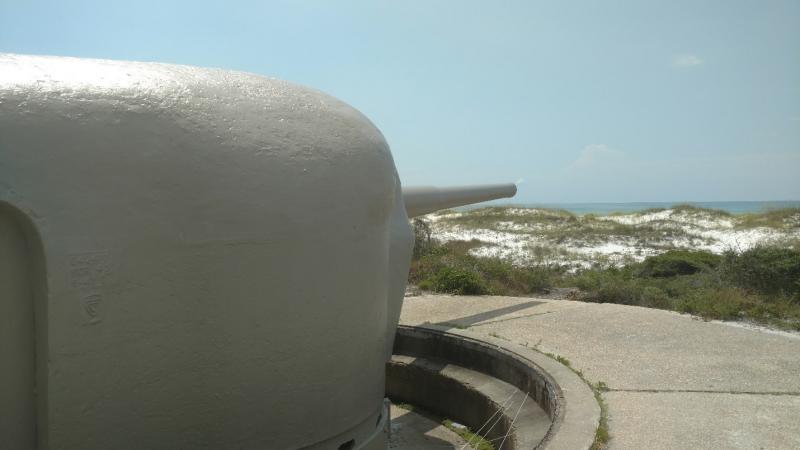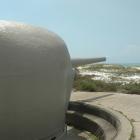Gulf Islands National Seashore was established in 1971 by the United States Congress, along the northern edge of the Gulf of Mexico. The park includes fringing barrier islands and some coastal spaces on the mainland of Florida and Mississippi. The national seashore encompasses over 40,000 hectares that include white sand beaches, uninhabited barrier islands, and the remnants of the Spanish, British, French, and American military fortifications, which provide much of the elevation in this low-lying sandy landscape.
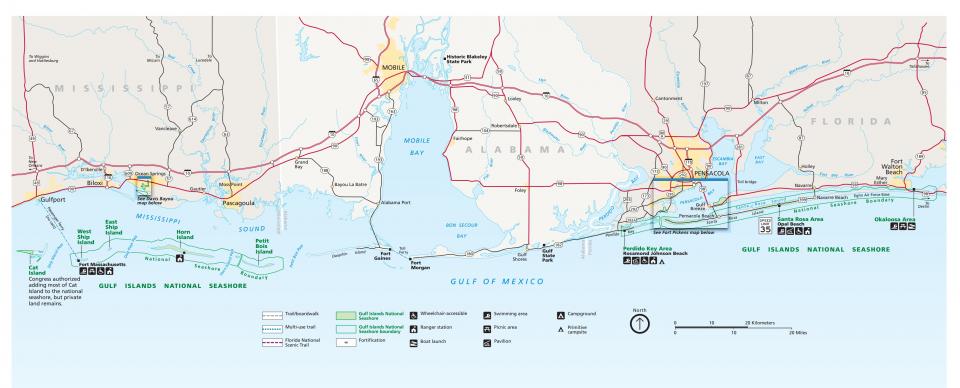
Map of Gulf Islands National Seashore, 2016.
Map of Gulf Islands National Seashore, 2016.
Courtesy of the National Park Service.
 This work is licensed under a Creative Commons Public Domain Mark 1.0 License.
This work is licensed under a Creative Commons Public Domain Mark 1.0 License.
The remains of four American fortifications, three centuries of gun batteries, and archaeological evidence of colonial fortifications signal the long-term military use of the gulf islands as strategic positions for Europeans and Americans defending territorial claims to the Mississippi River. Visually distinct from today’s brick, mortar, and cannons, coastal armoring in the form of artificial dredge beaches and islands continues to defend American land boundaries from hurricane surges, erosion, and the compounding effects sea level rise
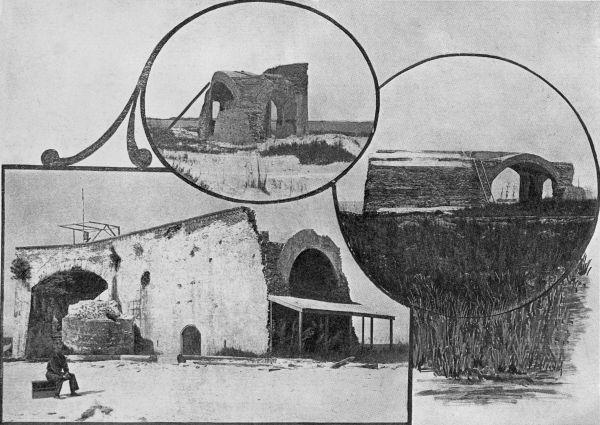
Ruins of Fort McRee on Perdido Key, Florida, 1906.
Ruins of Fort McRee on Perdido Key, Florida, 1906.
Courtesy of the Florida Memory State Library and Archives of Florida. N030866.
Click here to view source.
 This work is licensed under a Creative Commons Public Domain Mark 1.0 License.
This work is licensed under a Creative Commons Public Domain Mark 1.0 License.
At the western end of Gulf Islands National Seashore, approximately 19 kilometers off the coast of Mississippi and extending approximately eleven kilometers in length, the gulf island of Ship Island was named for its protected harbor. For four centuries, Europeans and then American developed East Ship and West Ship Islands—at times unified by a sandy neck as Ship Island—for trade, military, and recreational purposes. First in 1699, French merchants established a trading warehouse and drew unrealized plans for a fort on the island to indicate their presence and territorial claims in the area. For the next century, Ship Island served as a refuge when hurricanes drowned other coastal areas or filled nearby harbors with sand.
In order to protect American commercial navigation and military activities between Mobile and New Orleans, the United States completed construction on Ship Island Light Station in 1853, and in 1857 began construction on a large masonry fortification that would become the present-day Fort Massachusetts. Engineers designed the foundations of the lighthouse to resist coastal erosion. Although only partially completed at the start of the Civil War, construction on the fort continued and the island served as a naval refueling station and as a prison before Fort Massachusetts was completed in 1866 and armed soon after. Despite engineering efforts, by 1882 the foundation of Fort Massachusetts was undermined by the sea with high tides running up the fort’s outer wall. In order to maintain the military presence on the island, the Army Corps built timber and stone jetties and a bulkhead to hold the island in place, defending Mississippi Sound by preserving the fort.
After the Civil War, the United States government continued to use the relatively isolated Ship Island to house a prison and yellow fever quarantine station. Though not a masonry bastion, the quarantine station defended southern ports from contagion. Engineers constructed a hurricane-proof shelter in the quarantine complex on piers sunk thirty feet into the island to provide stability on the moving sand. When the hurricane of 1893 damaged the quarantine station, cut a channel across much of the island, and removed sand from underneath Fort Massachusetts, military and lighthouse officials reshaped the island, backfilling portions of the fort with sand and fortifying a new lighthouse with sand and ballast stone riprap in order to maintain the use of these stations.
Though initially updated to withstand new weapon capabilities after the Civil War, by the early 20th century Ship Island fell out of use. The government leased or sold island tracts to civic organizations, individuals and the state of Mississippi to maintain the structures and use the islands for recreation. In 1969, Hurricane Camille devastated the northern Gulf, killing 131 people, causing 1.4 billion US dollars in damages, and cutting Ship Island in two. As both the culmination of years of planning and aid for hurricane recovery, in 1971, Congress designated Gulf Islands, including Ship Island, as a new national seashore.
At Ship Island, National Park Service managers stabilized Fort Massachusetts, conducting sand nourishment and building a seawall to protect the historic fort and the recreational values of the island. However, East and West Ship Islands remained breached and Fort Massachusetts was further damaged by a series of destructive storms in the early 2000s, including Hurricane Katrina in 2005.
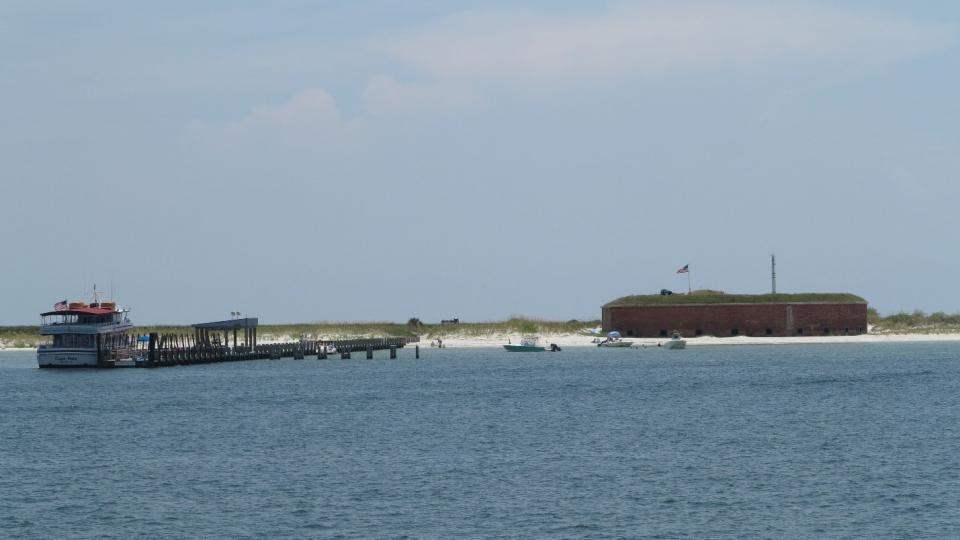
Ferry dock at East Ship Island, Mississippi, Gulf Islands National Seashore. The U.S. Army Corps of Engineers Mississippi Coastal Improvements Program is depositing sand to reconnect East and West Ship Islands, which were formed when Ship Island was breached by Hurricane Camille in 1969.
Ferry dock at East Ship Island, Mississippi, Gulf Islands National Seashore. The U.S. Army Corps of Engineers Mississippi Coastal Improvements Program is depositing sand to reconnect East and West Ship Islands, which were formed when Ship Island was breached by Hurricane Camille in 1969.
© Alanna Casey
This work is used by permission of the copyright holder.
Following Hurricane Katrina, the Army Corps of Engineers and partners began the Mississippi Coastal Improvements Program. This project will add 16.8 million cubic meters of sand at four locations in the Mississippi portion of Gulf Islands National Seashore with the stated purpose of protecting the mainland of the Gulf Coast from future storm events and sea level rise. While the Ship Island Light Station and Fort Massachusetts have been protected with dredge sand for over a century, through this project, the island itself has become the defensive structure protecting not just the fort, but the US mainland along the northern Gulf.

The aerial image at left shows Ship Island in 2017 before sand deposition and the aerial image at right shows Ship Island, Mississippi in 2019 after East and West Ship Islands were reconnected as part of the Mississippi Coastal Improvements Program.
The aerial image at left shows Ship Island in 2017 before sand deposition and the aerial image at right shows Ship Island, Mississippi in 2019 after East and West Ship Islands were reconnected as part of the Mississippi Coastal Improvements Program.
Left image: © 2019 DigitalGlobe, courtesy of Google.
Right image: © 2019 TerraMetrics, © 2018 Google
The copyright holder reserves, or holds for their own use, all the rights provided by copyright law, such as distribution, performance, and creation of derivative works.
Today, Ship Island within Gulf Islands National Seashore serves as a recreational space, as well as a modern defensive structure, protecting Gulfport and coastal Mississippi from territorial losses due to hurricanes, extreme weather, and climate change created by over a century of fossil fuel development and use. Still a defensive landscape, the fortifications, infrastructure, and dredge sand of Gulf Islands National Seashore chronicle the changing meaning of coastal defenses along the Gulf Coast of the United States.
How to cite
Casey, Alanna. “Defending the Shoreline: From Cannon to Beach Nourishment in Gulf Islands National Seashore.” Environment & Society Portal, Arcadia (Summer 2019), no. 19. Rachel Carson Center for Environment and Society. doi.org/10.5282/rcc/8772.
ISSN 2199-3408
Environment & Society Portal, Arcadia
 This work is licensed under a Creative Commons Attribution 4.0 International License.
This work is licensed under a Creative Commons Attribution 4.0 International License.
2019 Alanna Casey
This refers only to the text and does not include any image rights.
Please click on an image to view its individual rights status.
- Blanton, Dennis. “The Factors of Climate and Weather in Sixteenth-Century La Florida.” In Native and Spanish New Worlds: Sixteenth Century Entradas in the American Southwest and Southeast. Edited by Clay Mathers, Jeffrey M. Mitchem, and Charles M. Haecker. Tucson, Arizona: University of Arizona Press, 2013: 99–120.
- Manucy, Albert. “The Founding of Pensacola-Reasons and Reality.” Florida Historical Quarterly 37, nos. 3 and 4 (1959): 223–41.
- Kelman, Ari. “Boundary Issues: Clarifying New Orleans’ Murky Edges.” Journal of American History 94, no. 3 (December 2007): 695–703.
- Rawson, Michael. “What Lies Beneath: Science, Nature, and the Making of Boston Harbor.” Journal of Urban History 35, no. 5 (July 2009): 675–97.


